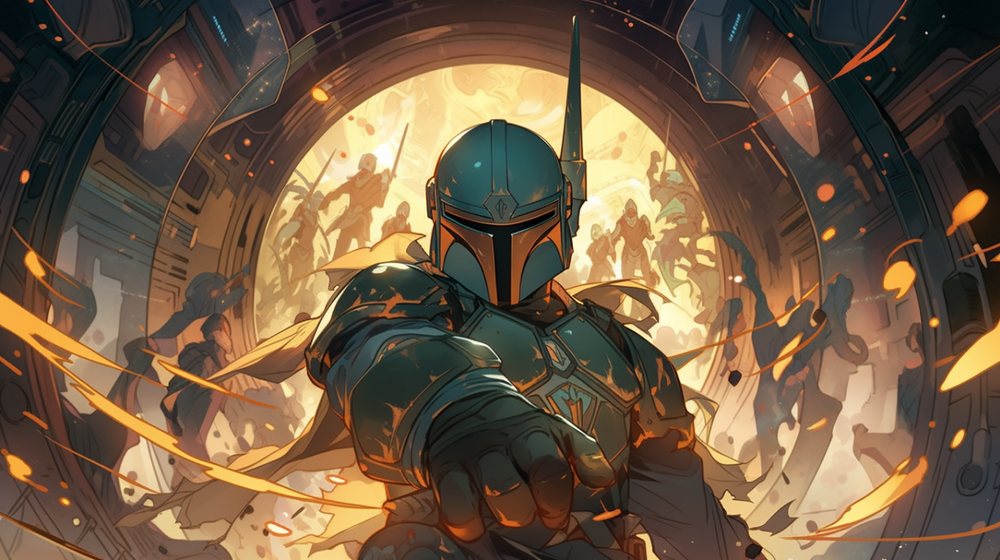Boba who?
And who is this Boba Fett? People who are only casually familiar with Star Wars may have trouble placing this bounty hunter properly. He first appeared on the big screen in The Empire Strikes Back and played a significant role in the capture of Han Solo.
However, in the following episode, he was promptly and justly eliminated by being thrown into the maw of the almighty Sarlacc, where he was supposed to decompose for the next thousand years.
We also saw him in his younger version in the second episode of the prequel trilogy, Attack of the Clones, and he showed up in the second season of The Mandalorian. All in all, he did not have such a significant role in the Star Wars universe that it would be worth a long discussion.
That held true until the producers at Disney calculated that another guy in Mandalorian armor could help them earn money for more yachts and haciendas.
Inspiration for The Mandalorian
It must be admitted that the series about Boba Fett would never have been made without the success of The Mandalorian. And that would never have been filmed if it weren't for the small, but significantly annoying snippet of Boba Fett in the original trilogy. Even so, this character has gained a cult status among fans.
Boba and Din Djarin are almost indistinguishable from each other. Not only do they wear practically identical Mandalorian armor, they are men of few words (Boba in the original trilogy doesn't even speak at all), and they also make a living hunting people and non-humans alike for bounty.
Hastily thrown together
And it is precisely this job that eventually got Boba into trouble. As mentioned earlier, at the beginning of episode six, poor Boba was bedding down in the Sarlacc's stomach. Instead of comfortably decomposing there for the next millennium, he decided to escape, which meant not only saving his life, but also an interesting opportunity.
The havoc in episode six also saw the local kingpin Jabba the Hutt not survive, and Boba wants to take his place. And that's exactly what the whole series is about.
It sounds quite interesting. A Star Wars gangster story hasn't been done yet, and with good script and directorial guidance, it could be a hit. The problem is, this series lacks that.
The plot partially consists of Boba's memories of the time he spent injured in the Tusken camp and the current events. Neither is really worth it. The action is boring, often even embarrassing. The dialogues are even worse.
You can see that Boba himself, whose character in the films was mainly intended to serve as a cool factor, simply can't carry the series, and the side characters don't help much either.

